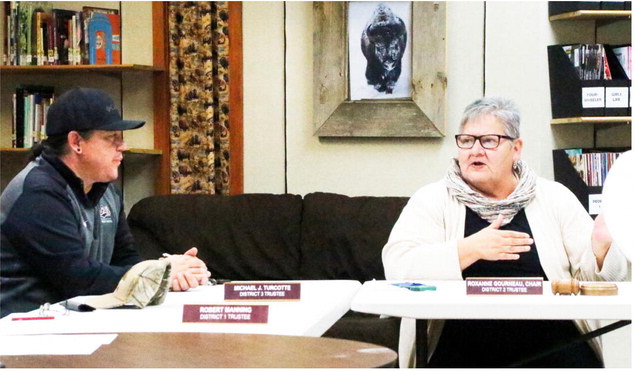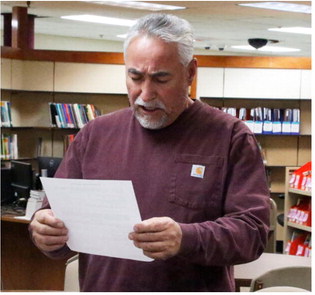Lackluster Investigations May Perpetuate High Native Infant Mortality Rate
When Jessica Whitehawk helped start a women’s health support center more than a decade ago, her team worked out of a tiny room in the back of a nonprofit office on the Yakama Nation Reservation in Washington state.
Pregnant women traveled to that room from the farthest reaches of the 1.3 million-acre reservation because they had nowhere else to go for health care or prenatal advice, Whitehawk said.
Many tribal communities have a similar lack of resources, which contributes to American Indian and Alaska Native infants being twice as likely as non-Hispanic white babies to die before their first birthday.
A recent study suggests another reason for the high infant mortality rate among Native babies: The way that law enforcement authorities investigate possible cases of sudden unexpected infant deaths, known as SUIDs, in tribal communities. Researchers found that compared with other racial groups, American Indian and Alaska Native SUIDs were most likely to result in police investigations, which were often incomplete, as opposed to the more thorough investigations conducted by medical examiners or coroners’ forensic staff.
As a result, experts say, less is known about those cases, and so less can be done to help prevent future infant deaths in tribal communities that might have scant access to prenatal care or whose cultural practices call for sensitivity.
Medical examiners are pathologist physicians who are trained to explore all causes of death, while law enforcement agencies are trained to explore criminal circumstances. Rural Native communities often don’t have medical examiners, and they frequently have strained relationships with police.
Pathologist Dr. Nicole Jackson, the former associate medical examiner for King County, Washington, said that during her training in New Mexico, she saw many tribal infant deaths. Police, often tribal law enforcement agencies, were frequently the ones leading those investigations, she said. “The medical, legal death investigation system in America is just so understaffed and underfunded,” said Jackson, now an assistant professor at the University of Washington and director of Autopsy and After Death Services at the UW Medical Center.
“If it was better staffed and better funded, we would not have to rely on law enforcement in certain regions conducting these delicate investigations,” she said.
The authors of the recent SUIDs study looked at more than 3,800 cases between 2015 and 2018. They categorized investigations as incomplete if there was no autopsy or no investigation of the scene, or if details were missing on where and how the body was found.
That lack of data can hamper prevention efforts.
In many of the incomplete cases, for example, investigators didn’t ask the caregivers to use baby dolls to show the position in which they found the deceased infant — even though that exercise is recommended by experts including the federal Centers for Disease Control and Prevention and the National Association of Medical Examiners.
These doll “reenactments” help investigators determine whether unsafe conditions or sleep practices might have led to suffocation.
Sometimes, for example, babies could be sleeping in poor housing situations. Abigail Echo-Hawk, executive vice president at the Seattle Indian Health Board and director of the Urban Indian Health Institute, recalled one baby’s death on a high-poverty reservation with a shortage of housing. The baby’s family members all slept on the floor in a single room.
She added that because the reenactments can be so traumatizing, it’s critical for investigators to be culturally sensitive. Additionally, untrained investigators may misinterpret a family’s culture: For example, some tribes refrain from speaking the name of the baby for a year after the death.
“Our public health data system collects the lowest quality information on the groups that have the worst health outcomes, when those are the groups we should be collecting the most information about,” said Naomi Harada Thyden, a public health research scientist at the University of Minnesota and the lead author of the study, which was published this spring in the Journal of Public Health Management & Practice.
Whitehawk, who is a member of the Winnebago and Santee Tribes of Nebraska, said those disparities led her and co-founders to launch the Ttáwaxt Birth Justice Center 12 years ago. The center now operates a clinic that offers reproductive health care, lactation education and support groups that center tribal traditions. The team plans to eventually launch a birthing facility.
Whitehawk tied the high infant mortality rates to structural racism and a lack of investment in tribal communities.
“Two hundred years of systemic racism and systemic violence against women and children — don’t we think that might have an impact on why [our] infants are dying all across the nation?”
Strained Relationships
Janelle Palacios is an attending nurse-midwife and an associate professor at Montana State University who studies parenthood in tribal communities. As a mother herself, she saw firsthand how incomplete data collection can skew public health statistics.
Palacios is an enrolled member of the Salish and Kootenai tribes, but when her last two children were born in California, she had to insist that “Native American” be added to their birth certificates, as their race had only been recorded as Hispanic.
Palacios said medical examiners should lead SUIDs investigations, because the relationships between tribal communities and local law enforcement agencies often are strained. As a result, many Native families are reluctant to share information with police, she said.
“Tribal communities have a long memory,” Palacios said, referring to the history of the U.S. government removing Native children from homes and placing them in boarding schools, often with deadly outcomes, along with Native children’s current disproportionate representation in foster care.
“We have this tension over land and resources, tension over people, tension over the children,” Palacios said.
Dr. Reade Quinton, a Minnesota medical examiner and vice president of the National Association of Medical Examiners, likewise said that “many of these communities are distrustful of law enforcement, and understandably so.”
Quinton said Native parents might wonder, when investigators ask routine questions about a cause of death, “Are you really trying to answer that question, or are you trying to blame me for something?”
Cultural Competence
In Wyoming’s Fremont County, coroner Erin Ivie has handled death investigations at the neighboring Wind River Reservation for two decades. Ivie said her staff members, who are not Indigenous, have taken training courses for cultural sensitivity. Her office also returns to a family months later and asks how they felt about the interactions to make sure the questioning is done in an “appropriate manner.”
She added that her office works in tandem with law enforcement agencies on investigations.
“We treat every case as a homicide until we can rule it otherwise,” Ivie said. “We’re not leaving any question or stone unturned, and consulting with both our forensic pathologist and the child’s primary care provider.”
That approach, of treating each case as a homicide from the start, can affect how the investigation is conducted, said Jackson, the University of Washington assistant professor.
“We never want to miss a homicide,” she said. But a more holistic approach, with social workers and trained medical examiner staff, can “better connect with families during that very delicate time, because as we know, most of these aren’t homicides.”
Jackson said her job of studying unexpected deaths is ultimately “to serve the living.”
A “life is lost, but hopefully, collectively, we can study and learn some things, feed public health systems” to improve lives, she said.
At Ttáwaxt, breaking down barriers to help parents and babies is a core mission. In interviews with new mothers and families, Whitehawk’s team found that families were less likely to lose their babies if there are elders living in the household. Infant health, she said, is a marker of the health of a community.
“The advocacy, the education, the quality care, the caring around mothers and children, it changes the narrative of the whole entire community,” Whitehawk said. “We center building community around birth … the birth of a child or bringing new life into the world.”
( This story was originally produced by Stateline which is part of States Newsroom, a nonprofit news network, including the Daily Montanan, supported by grants and a coalition of donors as a 501c(3) public charity.)

